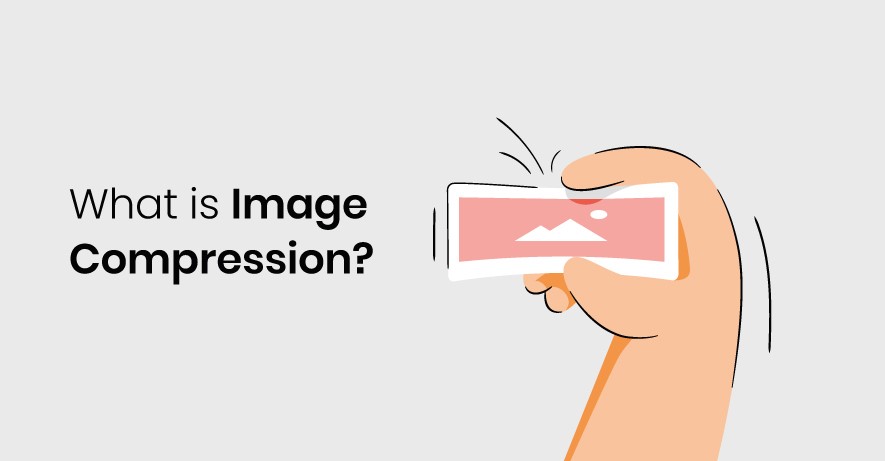As image compression may appear to be a concept only the experts are familiar with, it is much more than that, for those who are actively using digital devices have closer relationship with the ready-made images at hand. As you compress an image, the optimizing process occurs which passes several uses for the image, such as reducing the file size and as such it also affects the speed of your web pages loading or the quality of the visuals you post on social media, and how much space you use on your hard drive or caror cloud storage. During this process the quality remain intact and lose the attention. Therefore, it is one of the most important the digital instruments in the daily use of viewers or ones who deal the images frequently.
The way of learning how to perform image compression is making first, an acquaintance with the purpose of this compression and ending up with knowing about the different file formats, their effect on compression and the distortion. Next, an introduction to practically the way image compression works will follow, which will be the basis for the practical application area. Images are naturally the heaviest file type which might take time to load on the website. Hence, optimizing their size is important. With Imageslite, compressing images becomes the most straightforward task which surpasses other tools in the market.
So, today we will focus on the use of Imageslite, which will navigate you through the nuances of image compression, ensuring your digital visuals remain high-quality and web-ready
Why is Image Compression Important?
Today, speed and efficiency are critical in terms of image compression, where compression technology does not in the slightest give way. After all, the websites speed is directly associated with bounce rate reduction and engagement of site visitors therefore influencing customer satisfaction and search engine rankings indirectly. In terms of the end user, compression of image files results in better space management, which is even relevant for those who own a limited amount of storage space connecting to their smartphone. Besides, business environment makes displays, presentations, reports and electronic documents smaller but without givship in the quality.
Environmental impact of data storage to be discussed is one more topic we should discuss. With the digital footprint (the trail left by human activity) that is expanding each day, comes the energy expended in saving and processing data. Image compression leads to the reduction of the digital footprint carrying and this makes practices more eco-friendly.
Understanding Different Image File Formats – JPG, PNG, BMP, TIFF, GIF
Before diving into the process of image compression, it’s essential to get acquainted with the various image file formats, as each has its unique characteristics and is suited for different purposes. JPG, one of the most common formats, is known for its ability to compress to very small sizes, making it ideal for photographs and images with gradients. However, this comes at the cost of some loss in quality due to its lossy compression.
PNG, on the other hand, offers lossless compression, preserving the original quality of the image. This makes it perfect for images with text, transparent backgrounds, or those requiring sharp detail. BMP and TIFF are less commonly used for web purposes due to their large file sizes but offer high quality for printing and archiving. GIF stands out for its ability to support simple animations and is commonly used for short, looping videos and images with limited color palettes.
How Does Image Compression Work?
At its core, image compression involves reducing the file size of an image, either through lossy or lossless methods. Lossy compression reduces file size by permanently eliminating certain information, especially redundant or less important data, making it irreversible. Lossless compression, while maintaining the original quality, reduces file size by removing unnecessary metadata and applying algorithms to compress the image data without losing any detail.
The magic behind image compression lies in algorithms and technologies that analyze images for patterns, colors, and redundancies, then re-encode the image more efficiently. This process is complex and requires powerful tools like Imageslite to manage effectively, offering a balance between compression and quality.
Step-by-Step Guide to Compressing Images Using Imageslite
Compressing images with Imageslite is a straightforward process, thanks to its intuitive interface and powerful algorithms. Here’s how you can do it:
- Upload Your Image: Start by uploading the image you wish to compress. Imageslite supports various formats, including JPG, PNG, BMP, TIFF, and GIF.
- Select Compression Type: Choose between lossy or lossless compression based on your needs. If unsure, experiment with both to see which suits your image better.
- Simply Download: Before finalizing, preview the compressed image to ensure it meets your expectations. If satisfied, download the optimized image, ready for use.
This process not only saves you space but also ensures your images are primed for their intended use, be it web publishing, sharing on social media, or archiving.
Benefits of Using Imageslite for Image Compression
Concerning yourself with Imageslite while getting the best compression image solutions is an excellent move because of the plentiful advantages that come with the package. Importantly, its flexible nature which allows it to use several file formats with incomparable outcomes, is what makes it a desired software. Finally, the image thumbnail tool is designed in such a manner that it offers a balance between compression and quality without compromising the pictures in any way. The user-friendly interface and option to change compression settings may help neophytes and professionals of different skill levels define the effect
Additionally, fast processing speeds allow for the compressing of big batches of images within minutes and this would be highly advantageous for large digital libraries. This efficiency does not compromise the originality of your images. Thus, Imageslite provides reliable, top-notch, and the best compression ion quality for all your image compression needs.
Conclusion
In mastering image compression, understanding the why and how is just as important as choosing the right tool for the job. With this guide, you’re now equipped with the knowledge and steps necessary to compress images effectively using Imageslite. By optimizing your images, you not only enhance your digital projects but also contribute to more sustainable and efficient digital practices.
Embrace the power of image compression with Imageslite and witness the transformative impact it has on your digital presence. Whether you’re looking to speed up your website, save storage space, or simply share high-quality images effortlessly, Imageslite is your go-to tool.
Dive into the world of efficient image management by trying Imageslite for free. Experience firsthand the difference it makes in your digital projects, and take the first step towards mastering image compression



